
In a world obsessed with “new and improved,” imagine taking a cue from people who keep things as simple as possible. The Amish, known for their quiet ways and timeless traditions, live without the clutter and chaos that fills most of our lives—and they’re doing pretty well for themselves.
Their approach isn’t about living without but within their means, values, and communities. Strangely enough, these humble habits translate into smart financial wisdom and sustainable happiness, proving that fancy tech and endless upgrades aren’t the keys to a fulfilling life. So, here’s a look at what the Amish know about saving money and why their methods change your life!
Closed Off From the World
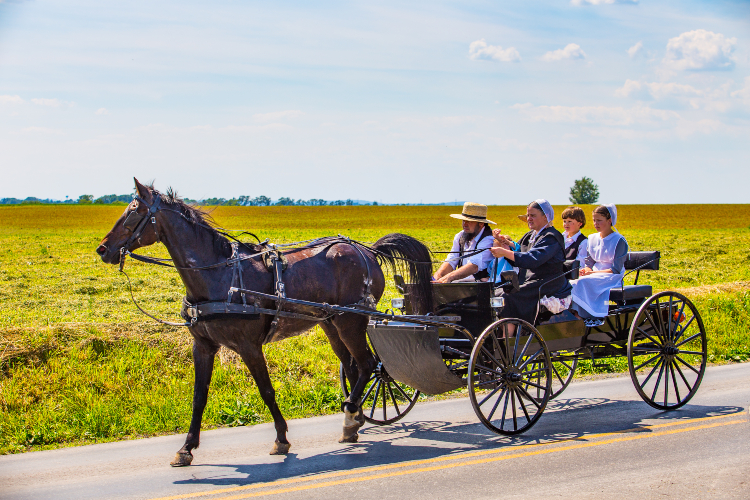
Imagine stepping into a world where life runs on simplicity, tradition, and community values, untouched by the constant buzz of modern-day tech. The Amish, with their Swiss-German roots from the 1600s, are a fascinating example of just that.
Known for handcrafted clothes, buggies instead of cars, and an all-in approach to faith and family, they choose to keep life straightforward by staying within their tight-knit circles. Being a “closed community” doesn’t mean they’re unfriendly; it’s just their way of keeping distractions out and focusing on essentials. In doing so, they show us that true wealth isn’t in more stuff—it’s in valuing what’s already there, a reminder to save and simplify.
A Life Unplugged

Picture a world where lamps run on kerosene, stoves burn wood, and travel depends on horsepower—literal horsepower. That’s the Amish way, bypassing electricity entirely and sticking to time-tested, off-grid methods. Kerosene lights bring a cozy glow to their evenings, while gas-powered refrigerators keep things chilled without the need for an electric hum.
Interestingly, some Amish communities allow limited electricity during emergencies, like hospitals or urgent situations, showing that even tradition can bend a little. Their low-energy lifestyle isn’t just practical; it hints at a refreshing way to reduce electrical bills. It’s all about cutting back, making do, and rethinking how much “power” is truly needed.
Beyond the Mustache

Forget designer grooming kits and trendy beard styles—the Amish keep it old-school and intentional. Their unique look, with a long chin beard but a mustache-free upper lip, actually dates back to the 1800s, when mustaches symbolized military rank and authority. To avoid any association with such displays, they opted for a cleaner, peaceful appearance that aligns with their values.
This beard style isn’t just about looks; it’s a practical, low-maintenance approach to personal care that saves time and money. For those tempted by minimalist living, the Amish approach offers a wallet-friendly alternative—skipping the razors and trimmers for an easy, thoughtful grooming style that needs almost no upkeep.
Living Unplugged: Roots Over Routers

While most of us are caught in the endless cycle of upgrading gadgets, the Amish take a refreshingly different approach. No constant tech upgrades, no eyeing the latest iPhone—Amish families stay blissfully out of the loop regarding tech trends. Many use phones or computers strictly for business and keep them far from their homes.
The goal is to maintain a life off the grid, free from digital distractions and consumer cravings. For the Amish, a legacy isn’t a collection of devices; it’s the farm they’ll pass down to their children. They focus on preserving land, skills, and traditions rather than following the latest tech wave.
Freedom from Credit Card Debt

In a country where credit card debt has hit over $1 trillion, the Amish community is a unique example of financial restraint. Debt isn’t just avoided—it’s actively discouraged, rooted in a belief that owing money compromises independence and community values. Credit cards are rarely seen, and when they are, they’re used sparingly and only for true necessities.
Instead, the Amish prefer substantial down payments and a cash-based lifestyle, keeping financial obligations simple and clear. This disciplined approach helps them sidestep the pitfalls of high interest and relentless debt, cultivating financial stability that feels more secure and grounded than the typical American credit-driven experience.
Borrowing Wisely, Living Simply
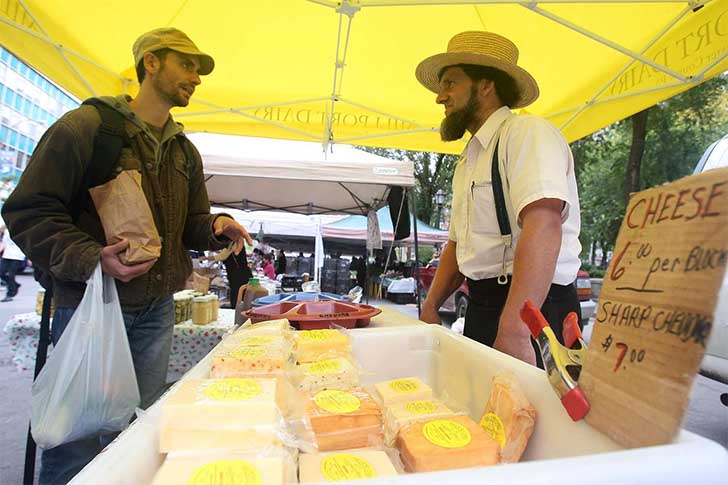
For the Amish, taking a loan isn’t just a financial transaction; it’s a moral commitment. While banks are more than happy to lend to them—thanks to their reputation for reliability—the Amish avoid debt whenever possible. In their view, owing money complicates their simple, peaceful way of life, and paying it back is a duty they take very seriously.
If a loan is necessary, they approach it with a sense of responsibility, ensuring they repay it promptly. The thought of piling up debt goes against everything the Amish value, as financial freedom and simplicity are at the heart of their approach to money and life.
Bargains Without a Price Tag

In the Amish community, making a deal often means leaving the wallet at home. Bartering is alive and well, allowing them to trade goods and services without ever touching a dollar. Need a new cow? It might just cost you a few handmade rag rugs.
These rugs, in turn, can find their way to a local farmer’s market or roadside stand, creating a loop where everyone benefits without a single swipe or cash exchange. This old-school trade system adds value through skills, craftsmanship, and mutual support, making every transaction personal and practical. For the Amish, saving money often means thinking beyond it altogether.
Growing Wealth the Community Way
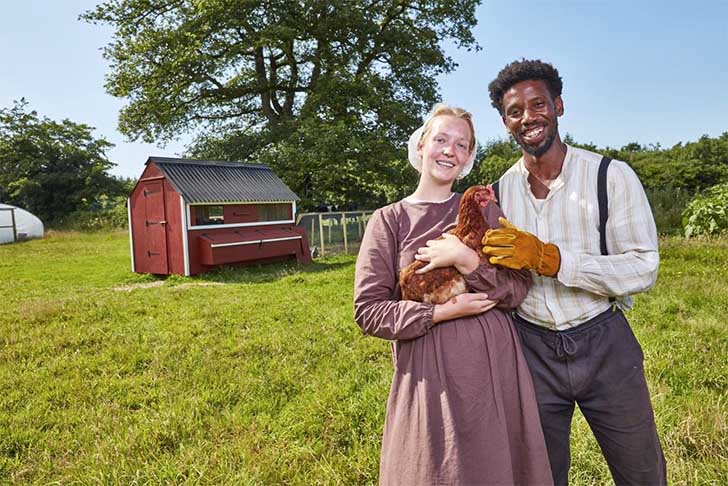
Generosity flows through a unique system of support in Amish communities. Wealthier members often lend a helping hand—literally investing in others—by offering low-interest loans to young adults ready to establish a farm or build a home. It’s more than kindness; it’s a long-term commitment to community growth.
These loans are crafted to lift new generations without the pressure of heavy debt, allowing borrowers to focus on becoming contributing members. As they build their homes and livelihoods, they repay their lenders, creating a continuous cycle of support. This approach ensures resources stay within the community, strengthening bonds and making collective prosperity a shared goal.
The Joy of Simple Toys

In Amish communities, playtime looks a little different—and much simpler. Instead of shelves packed with pricey, flashy toys, Amish children find joy in a handful of handmade treasures. Imagination takes center stage, with iconic faceless dolls leading the way, symbolizing the value of simplicity and humility.
These dolls, found in Amish shops across the United States, become blank slates for storytelling and creativity. With fewer toys around, Amish kids learn to entertain themselves, transforming ordinary days into adventures. This approach not only keeps children happily engaged but also helps families save significantly, putting money toward future needs rather than an endless cycle of trendy toys.
Amish Leisure Meets the Great Outdoors

While the Amish are famous for their hard work and simple living, they know how to enjoy life, too. Fun for the Amish might look a little different from the mainstream, but it’s all about connecting with nature and each other. Instead of pricey outings or gadgets, they unwind with activities like hiking through scenic trails or going on a hunting trip.
These outdoor adventures bring friends and family together, with laughter, stories, and a sense of shared experience. Best of all, these activities keep the costs low while delivering maximum enjoyment. For the Amish, fun doesn’t need bells and whistles—it just needs good company and the great outdoors.
Fluent in Heritage

In the Amish community, language isn’t just a tool—it’s a tie to their past and a bridge to the world around them. Growing up, every Amish child masters three languages: Pennsylvania Dutch for daily conversations, High German for religious gatherings, and English for interactions beyond their community.
This linguistic trio doesn’t just keep the tradition alive; it equips them with valuable business and communication skills. The Amish blend heritage with practicality, navigating both their world and the wider one easily. Without formal language classes or degrees, they effortlessly achieve a trilingual lifestyle, proving that connection and tradition sometimes make the best teachers.
The Rulebook That Shapes Their Lives

For the Amish, staying on track means following the Ordnung, a detailed guidebook of rules and values that shapes every aspect of their lives. Translating to “order” or “discipline” in German, the Ordnung goes beyond mere guidelines, spelling out expectations on everything from dress and technology to finances.
Alongside the Bible, it’s a core text that keeps their community grounded and cohesive. The Ordnung isn’t just about rules, though—it also provides practical advice on managing money, ensuring that resources are used wisely and purposefully. Any violation of the Ordnung’s rules carries consequences, emphasizing the importance of commitment to tradition and discipline in everyday Amish life.
The Price of Breaking Tradition

In Amish communities, the Ordnung sets a framework for life, blending structure with a surprising level of individual interpretation. Each person can reflect on what the rules mean to them, but crossing certain boundaries brings firm consequences. The most serious of these is “Meidung,” or shunning, which occurs when a member violates a central value.
Far from a simple slap on the wrist, Meidung is a complete social cutoff, removing the individual from daily interactions with family, friends, and neighbors. This practice underscores the community’s dedication to collective values while reminding everyone that while interpretation is allowed, deep commitment to the Ordnung remains non-negotiable.
The Beauty of Blending In
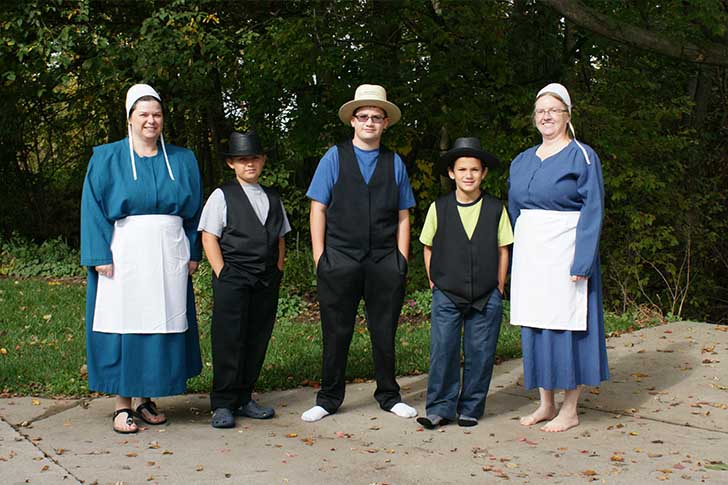
Amish fashion skips trends, labels, and the thrill of a shopping spree, focusing instead on simplicity and modesty. In this community, clothing serves a purpose beyond style—it reflects a commitment to humility and equality. Women wear plain dresses, men stick to black pants and straightforward shirts, and any hint of flashy jewelry, makeup, or accessories is left out.
Even stitching patterns are kept minimal to avoid drawing attention to any single person. This dedication to understated clothing keeps everyone on equal footing and emphasizes community values, a lifestyle choice that might make us rethink the constant pull of new clothes and ever-changing trends.
A Community Cookout Like No Other

For the Amish, community gatherings are the heart of social life, where “sharing is caring” might as well be the motto—even if they’ve never heard it. Without tech distractions, these events provide a way to stay connected and are essential for maintaining the community’s close-knit feel.
Potlucks, gatherings, and seasonal festivities bring everyone together, from elders sharing stories to kids running around in pure joy. Teens socialize too, creating bonds in ways no screen could replace. These gatherings bring the whole family together without a hefty price tag or a trip to the movies, making the simple act of gathering a cornerstone of Amish culture.
The Amish Guide to Growing Wealth
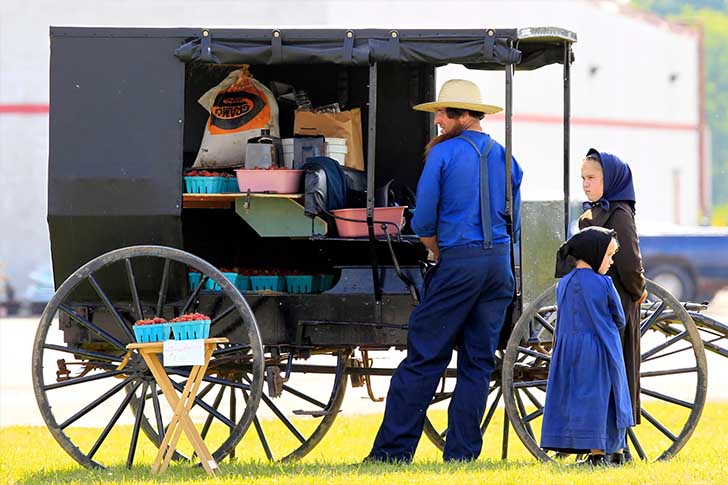
In the world of Amish finance, saving isn’t just a habit—it’s a way of life. Compared to the average American who sets aside about six percent of their income, the Amish community reaches an impressive twenty percent. This commitment to saving is woven into daily routines and supported by a culture that values frugality and simplicity.
One Amish farmer in Bird-In-Hand, Pennsylvania, raised 14 kids, rented a farm, and still saved $400K over 20 years. With steady discipline and a focus on essentials, the Amish turn careful budgeting into a community strength, proving that true abundance can come from living simply and saving wisely.
Crafting Quality the Old-Fashioned Way
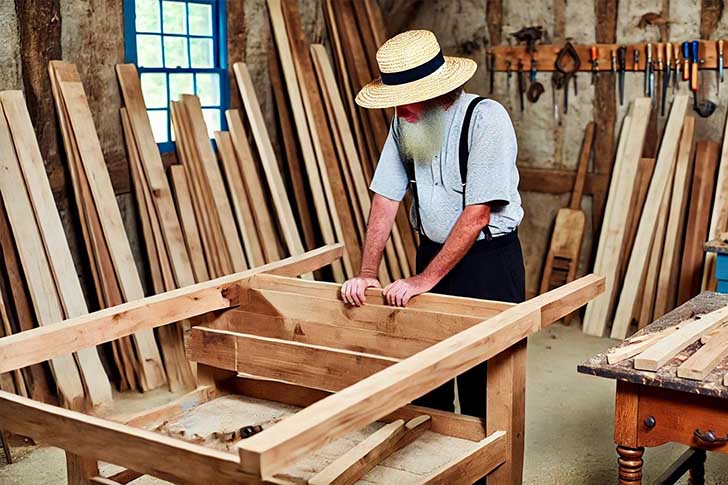
Amish craftsmanship goes far beyond tending fields and milking cows. Skilled in trades like woodworking, metal manufacturing, and construction, Amish artisans create furniture, homes, and metalwork that rival any high-end store. Ironically, while much of what they produce isn’t allowed inside their own homes, Amish-made goods have become prized worldwide for quality and durability.
With precision and pride, they turn simple materials into masterful pieces, all crafted without high-tech tools. These high-quality products come with a high price tag too, as demand continues to grow for Amish goods. It’s a thriving business model built on tradition, skill, and a commitment to excellence that attracts buyers from around the globe.
The Secret Sauce of Amish Success

The Amish community seems to have cracked the code in small business success. While the typical American small business has about a 50 percent chance of surviving five years, Amish businesses boast an astonishing 95 percent survival rate. What’s their secret? It’s a mix of picking high-demand trades and a work ethic that’s hard to beat.
Amish business owners often roll up their sleeves and work right alongside their “English” employees, creating a collaborative atmosphere everyone appreciates. With a leadership style that’s equal parts kindness and strength, Amish workplaces foster loyalty and dedication, building relationships that keep the business and its team going strong year after year.
Bulk Buying and Bountiful Living

In Amish life, feeding a family often means stocking up for an entire village—or so it seems. With an average of seven children per household, grocery shopping is all about bulk, from sacks of flour to barrels of oats. Amish stores cater to these big families by offering staples in massive quantities, allowing parents to stock their shelves without endless trips to town.
Living in spacious rural areas means storage isn’t a problem, so they can easily stow their hefty hauls. This approach isn’t just economical; it’s a way of life that combines practicality with a sharp eye for value, turning grocery runs into well-coordinated supply missions.
Waste Not: Repurposing Rags
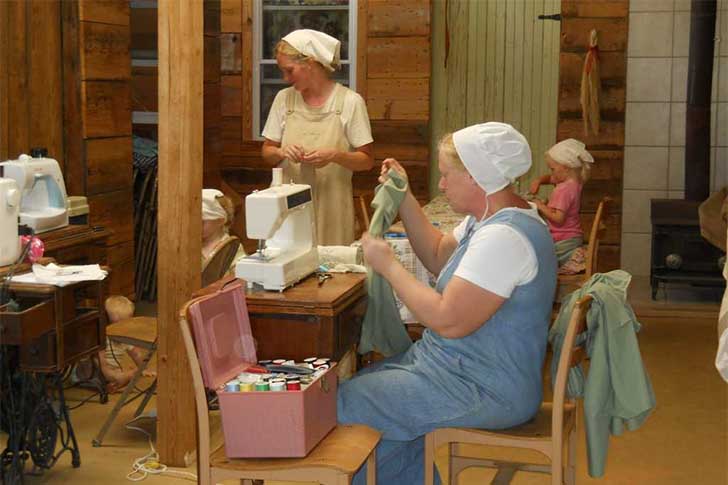
In Amish households, excess never means waste. Bulk buying fits their lifestyle perfectly, yet anything nearing its expiration finds a purpose—leftover food often feeds farm animals or supports local farmers. Clothes that no longer fit get passed down through the family, ensuring they’re worn to their full potential.
When garments finally reach the end of their life, they’re transformed into colorful strips for handmade rugs, creating something new from something old. It’s a resourcefulness that avoids waste and celebrates simplicity, where every item, big or small, gets a second life. This approach keeps their homes both clutter-free and filled with items that carry meaning and purpose.
The Thrifty Charm of Vintage Finds

Feeding a large Amish family is one challenge, but clothing them? That’s a different game, especially with an average of seven kids per household! While thrift shopping feels trendy, the Amish have long been pros at secondhand shopping, embracing it as part of their lifestyle.
Thrift stores, garage sales, and local Amish community exchanges offer them practical options for affordable, durable clothes that meet their modest standards. Shopping this way doesn’t just save cash—it’s also a practical way to recycle and ensure nothing goes to waste. With each piece of clothing finding a second home, thrift shopping in the Amish community has a purpose beyond simple savings.
Fresh from the Fields and Full of Flavor

For the Amish, eating fresh, organic food isn’t a trend; it’s simply tradition. Long before the world caught on to “farm-to-table” dining, Amish communities were growing chemical-free produce, raising livestock naturally, and keeping gardens that overflowed with seasonal crops.
Even those without full farms still plant their own small plots, ensuring that wholesome, homegrown food is always on the table. The Amish even have a special term—“freinschmeckers”—for those with a true appreciation of good, authentic food. This way of life has always been second nature, making the Amish the original enthusiasts of natural eating, sustainable practices, and enjoying the harvest right from their land.
A Portrait-Free Perspective

In Amish culture, preserving memories is all about what’s held in the heart, not what’s captured on canvas. Though brushes and canvases might be timeless, the Amish strictly avoid creating or displaying paintings of people. It’s not due to a lack of appreciation for the arts—they have plenty of talented musicians and writers among them.
Instead, they see portraits and photographs as “graven images,” which go against their beliefs. When someone passes, memories are cherished in stories, words, and the minds of loved ones, without any visual representation. This approach keeps their traditions focused on simplicity and spiritual connection, honoring loved ones in a way that’s deeply personal and unadorned.
Payday Without the Deductions
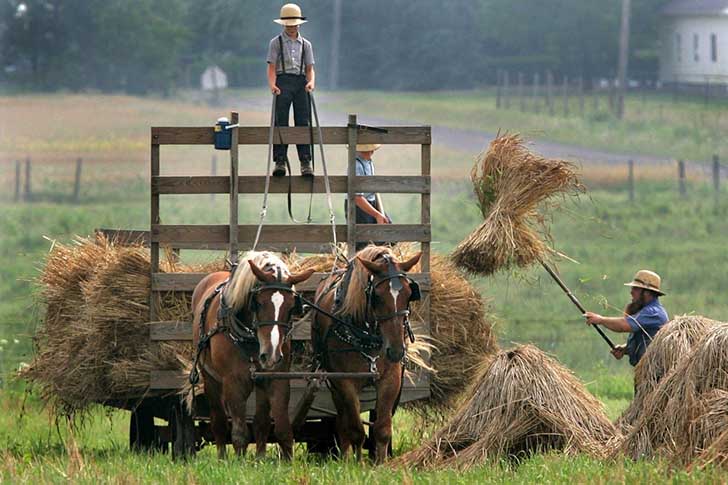
For most, payday is a mix of excitement and the inevitable sting of tax deductions, but it’s a bit different for the Amish. Thanks to a unique exemption, Amish workers don’t contribute to Social Security or expect its benefits. Rooted in their religious beliefs, the Amish rely on family and community support, forgoing government assistance in favor of a self-sustaining system.
This exemption means their paychecks are a bit fuller each month, allowing them to focus on local, communal aid instead of national programs. By sidestepping Social Security, the Amish maintain financial independence and uphold their deeply held values of mutual care within their communities.
Wealth Measured in Generations
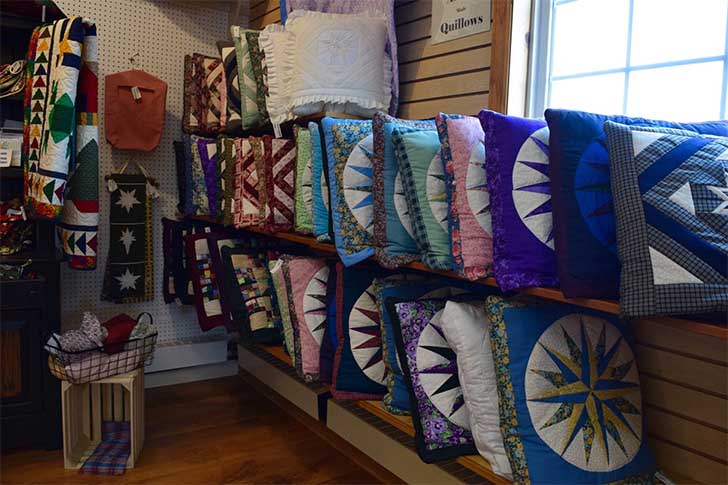
In Amish culture, financial priorities stand in stark contrast to the typical American dream of luxury homes, cars, and high-end fashion. Economists find that Amish families focus less on short-term gains and more on creating lasting security. For them, wealth isn’t displayed through possessions but invested in ways that support family and community for generations.
This mindset turns money into a means of stability and purpose, where land and resources are valued far more than any designer label. By keeping their sights on the future rather than fleeting luxuries, the Amish build a legacy that favors sustainability and enduring values over material displays.
Investing in Roots, Not Returns
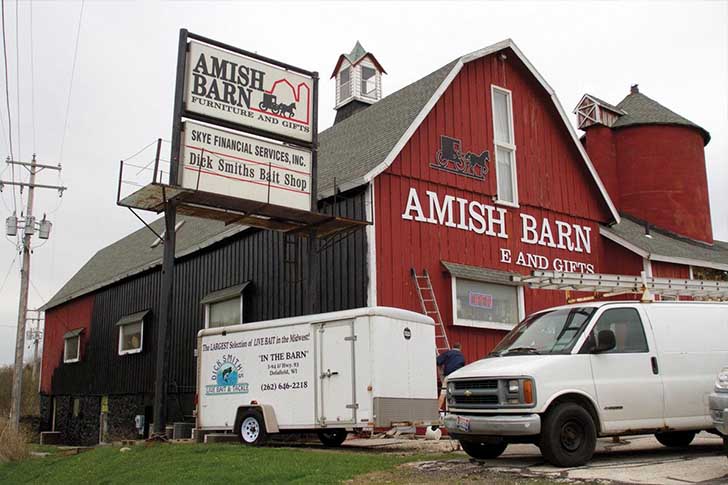
When it comes to building wealth, the Amish aren’t interested in tracking stock trends or following market buzz. While the rest of the country might be glued to Wall Street, the Amish prefer investments they can see, touch, and pass on. Real estate tops their list, as land provides a lasting foundation for family businesses, homes, and communities.
Rather than stocks and bonds, Amish families pour resources into small businesses like carpentry, quilting, and farming equipment—ventures they can nurture and control. For the Amish, true wealth lies in owning something tangible that holds value over generations, focusing on stability and tradition over quick returns.
The Art of Thoughtful Gifting

In Amish culture, gift-giving takes on a refreshingly practical twist, especially during the unofficial wedding season from late spring to early fall. Unlike the endless cycle of extravagant gifts we often see, Amish presents are focused on utility rather than luxury. Gifts are thoughtfully selected to meet real needs—think LED flashlights or essential tools like Dewalt flashlights, perfect for life off the grid.
Wintertime brings another wave of gift-giving, but even then, the Amish stick to items that will genuinely benefit the recipient. This approach keeps costs down and focuses on function, offering a simple reminder that thoughtful, need-based gifts can be just as meaningful and often far more appreciated.
From Teen Paychecks to Family Prosperity
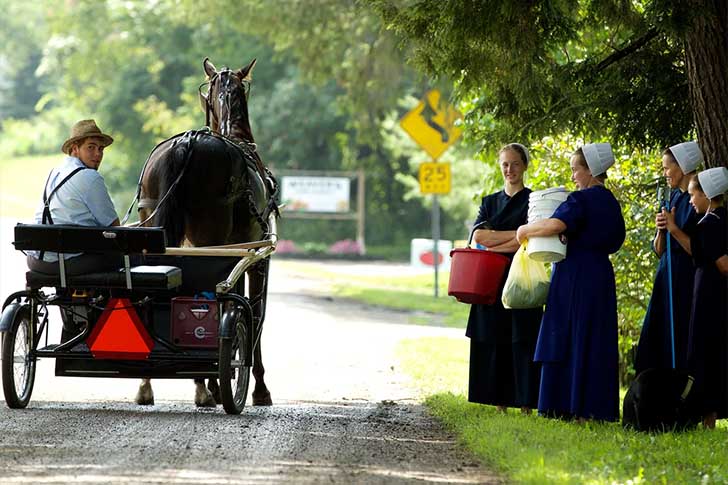
In Amish families, teenage earnings carry a different purpose. When young Amish start their first jobs, their paychecks don’t go toward weekend outings or personal treats. Instead, these earnings are handed over to their parents, woven directly into the family’s shared expenses.
This approach fosters a sense of responsibility, where teens contribute to household needs like groceries, helping to ease the family’s financial load. It’s a unique system that values collective support over individual spending, showing teens the impact of their work on family life. Through this, Amish teenagers learn early on that their efforts and income play a vital role in the well-being of everyone at home.
Waste Not, Want Not

Food waste in America hovers around 30 to 40 percent, but the Amish community keeps that number much lower. The reason? Amish parents don’t entertain picky eating habits. From an early age, Amish kids learn to eat what’s served, no questions asked.
Mealtime isn’t a menu selection but a family gathering where everything on the table has a purpose—and often, a homegrown one. This no-nonsense approach means less food ends up in the trash, stretching the family budget and making each meal count. By teaching their kids to appreciate every bite, the Amish cut back on waste, saving both food and money in a way that’s both practical and sustainable.
A Taste of the Outside

Imagine being encouraged to explore life beyond your world, with jeans, cars, and modern gadgets suddenly within reach. For Amish teens, this phase—known as Rumspringa, or “running around”—invites them to experience life outside their community between the ages of 14 and 18.
It’s a purposeful break from tradition, allowing a glimpse into “English life,” as they call it, so they can make honest decisions about staying within the Amish fold. This thoughtful approach lets teens see what the world offers before fully committing to Amish values. By embracing this ritual, the Amish give their youth the freedom to explore that few would expect from such a traditional community.
School’s Out Forever

Forget college prep and advanced degrees; education takes a direct and practical route in the Amish community. By the time they complete 8th grade, Amish teens are ready to step into adulthood, choosing trades or beginning housekeeping without a single SAT score or college essay in sight.
For the boys, it’s about picking a skill that will carry them through life, while girls often dive into the art of managing a home. This approach values hands-on learning and immediate application over diplomas, proving that not every path to a secure future needs a pricey education. In their world, experience trumps theory!
Weddings Without the Glitz
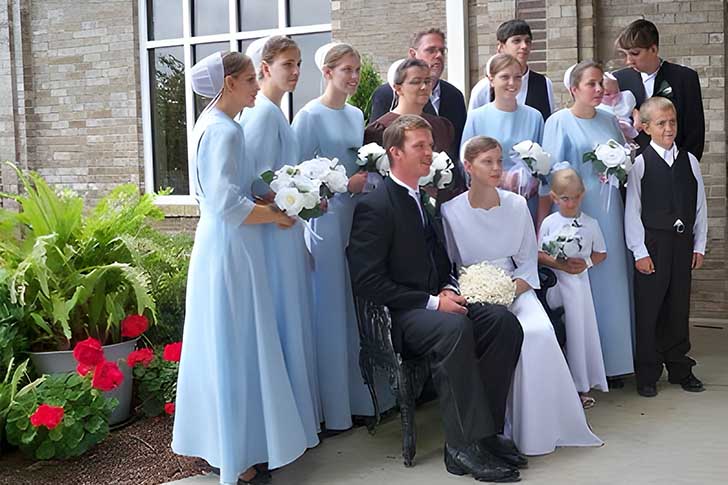
For the Amish, weddings focus on meaning over materials, with every detail reflecting simplicity and tradition. Instead of a lavish white gown, the bride wears a modest blue dress that she’ll use long after the big day, making practicality the star. No need for a diamond engagement ring either—Amish beliefs view such symbols as unnecessary and overly flashy.
Without makeup, jewelry, or a hairstylist in sight, the bride simply covers her hair, celebrating without the fuss of modern wedding trends. This pared-down approach saves a fortune and keeps attention on what truly matters: the union itself, free from the financial whirlwind that often accompanies weddings outside the Amish community.
Newlywed Traditions Don't Require a Passport

A honeymoon in Amish culture is more about family connections than tropical destinations. Rather than jetting off, the newlyweds settle in at the bride’s family home for their first night as a married couple. Privacy takes a backseat here, as the morning after, they’re busy cleaning the house as a thank-you gesture.
The honeymoon doesn’t end there—it continues with a tour of family homes, where the couple makes rounds to introduce themselves as husband and wife. If a place of their own isn’t ready yet, they simply stay with the bride’s parents. It’s a unique way to start married life, without the pricey hotel bookings and travel splurges.
Raising Roofs, Not Costs

In Amish communities, building a barn isn’t a solo project or something that drains a savings account; it’s a shared event. Neighbors show up without needing to be asked, each bringing tools, skills, and a helping hand. Barn raisings become an automatic group effort, where everyone works side by side, saving on costs and sharing the reward of a job done.
This approach turns an expensive construction job into a chance to bond and contribute, all without a price tag. For the Amish, this unspoken rule of mutual aid means that large projects come with minimal expense and maximum connection—a refreshing alternative to the usual bill for hired labor.
The Path to Pure Living
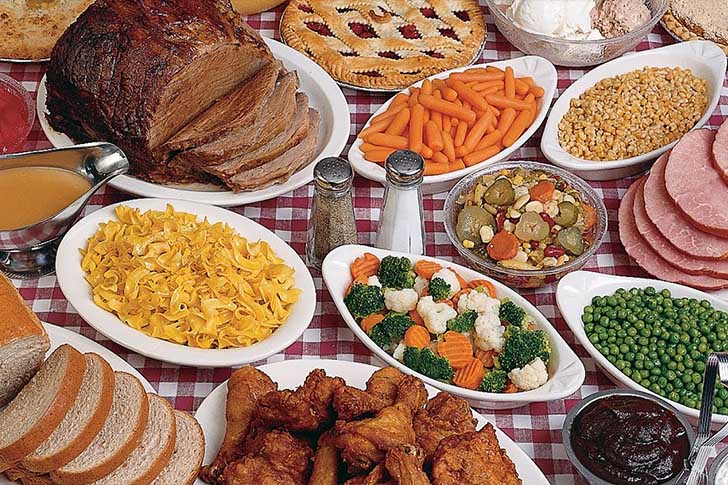
Looking to boost both your wallet and your wellness? The Amish might have the answer. Studies suggest that their simple, back-to-basics lifestyle helps ward off cancer and keeps obesity rates remarkably low. How? It’s all about those natural habits—homegrown, organic food, zero processed snacks, and not a cigarette or drop of alcohol in sight.
The Amish diet focuses on fresh ingredients they cultivate themselves, skipping the additives and artificial stuff. Add in a life full of physical, and outdoor work, and it’s clear why they’re a picture of health. With no fancy gym memberships or fad diets, their lifestyle offers a grounded, effective approach to healthy living.
The Shared Feast
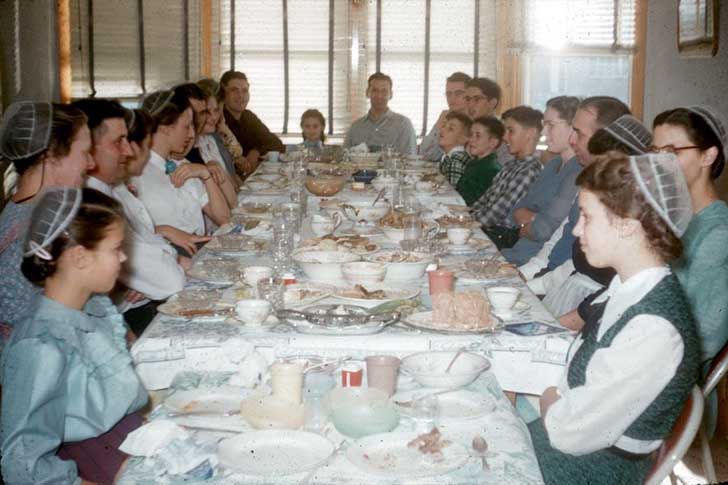
In Amish gatherings, a big meal doesn’t mean a big bill for the host. Each Sunday, families come together with friends, extended relatives, or their church community for a shared meal where everyone contributes a dish. This tradition turns a regular dinner into a communal feast, with flavors and recipes as varied as the people around the table.
By having everyone bring something to share, the Amish keep costs down and create a warm, collaborative atmosphere. It’s a simple, effective way to enjoy a hearty meal without the usual expense, turning Sunday suppers into an event that’s about togetherness and tradition, not spending.
A Clean and Connected Home

For the Amish, cleaning isn’t just a chore—it’s family time in disguise. Rather than hiring someone to handle the housework, everyone pitches in, from the youngest kids to the adults, making it a group effort that saves both time and money.
This hands-on approach not only keeps costs down but also allows them to bond over the simple tasks of tidying up, inside and out. Plus, by dividing up the work, they free up more time for income-earning activities without sacrificing a tidy home. It’s a practical system that turns a day of cleaning into something valuable, meaningful, and efficient for everyone involved.
Extra Work, Extra Worth

When extra expenses catch Amish families off guard, they roll up their sleeves instead of turning to credit cards. Rather than borrowing, many pick up a second job or offer their skills to neighbors, finding work on local farms or businesses to make up the difference. This approach reflects their belief that dedication and a bit of extra effort can overcome financial hurdles.
It’s a resourceful way to handle unexpected costs while reinforcing a strong sense of community support. In the Amish world, hard work and collaboration stand in for quick credit, keeping their finances grounded and true to their values.
Courting Traditions with a Modern Twist

Despite common misconceptions, Amish marriages aren’t arranged. Just like anyone else, Amish individuals fall in love and choose their own partners. The dating process resembles that of the “English” world, with young Amish courting and spending time together, discovering if they’re truly compatible.
However, there’s one significant guideline: marriage is only allowed between two members of the Amish church. At 18, each Amish youth decides whether to be baptized and officially join the church; this choice then determines their marriage options. While they’re free to pick a partner, that partner must also be Amish, meaning love stories with the English are off-limits, no matter how strong the connection.
Why Everyone’s “English” to the Amish

In the Amish world, anyone outside their community is simply “English.” This label has nothing to do with actual nationality, and it applies to everyone—whether from France, Brazil, or even Zimbabwe. The term dates back to the Amish community’s early days when the first outsiders they encountered were English-speaking settlers.
Over time, “English” became the catch-all term for anyone who isn’t Amish, a habit they’ve kept for generations. Referring to all non-Amish as “Americans” wouldn’t work, as the Amish are American too, so “English” stuck. It’s a quirky tradition, adding a unique twist to how the Amish see the world beyond their close-knit community.